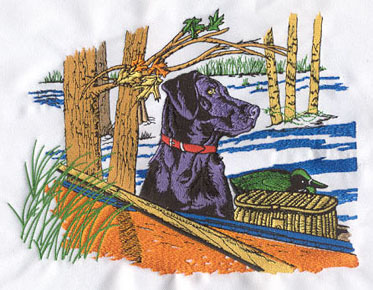How to Deal with Sewing Out of Registration in Embroidery Digitizing
You’re not alone in your struggles to get perfect registration in embroidery digitizing. This article will show you how to fix embroidery designs that are stitched in register. As the result, you will know exactly how much space you need between each row and have confidence when creating your design for embroidery.
Most problems with this design are
caused by the embroidery machine operator and could have been avoided entirely.
I always make sure that the designs you make are done with the same fabric
you're going to use on your final garment. This is of great importance, and it
will pay off handsomely both in terms of the quality and time of the
embroidery.
When I was working with an embroidery company trying to help restructure their production and bring it up to speed, a problem arose that is common among many embroiderers, especially those who are new or inexperienced.
One of the embroidery machine operators sewed the designs they received from the digitizer. She makes her own sewing to make sure the designs are on point and ready for production. She then embroidered 6 knitted shirts for clients on an 8-head machine. When she finished them, they were far from registered, which caused the material on the shirt to appear to stretch around the embroidery.
What caused this design registration to be so far away?
She asked me to look at the problem
and wonder why this happened. She also wants to know what she can do to avoid
this and how to fix it. These shirts are very expensive and the way they are is
totally unacceptable.
When I first saw it, I was shocked at how bad it looked. I asked her about the sewing process, what fabric she sewed with, what thread she used, how she hooped it, and how her tension was set. She sews her sewing on a 2-ply sturdy cut backing.
Her sewing wasn't done on the correct type of fabric; that was her main problem! You always use the same type of fabric or a very similar one to the finished garment. She also used 2 layers of heavy cut backing and the hoops weren't tight enough. The shirt or design is too heavy. She is best off with a lighter weight backing such as the 2 oz Split Back or the No Show Split Back. The No Show backing is a mesh backing that does a good job of supporting a lot of stitches while keeping the garment soft and pliable. She was right to use toppings on top of her dress.
Now the question is, how do you solve this problem?
Knowing how to restore embroidery designs is very important for every embroiderer. This is an easy repair method.
First, don't remove the garment from the hoop or the topping from the embroidery top. Lay the garment face down on a firm surface, use a tool called a "Peggy seam eraser," and remove the seams from the back of the garment. I use a large candle jar, one with a smooth bottom, upside down. You have to be very careful not to cut any holes in the fabric.
After removingall stitches and cleaning all threads thoroughly, it's time to embroider the design again.
This time, you have to increase the size of the design by 2% or 3%. This will be large enough to cover everything you delete.
You must make sure not to loosen the
ferrule while removing the stitches. this point is very important. If you do
this, you'll need to tighten the hoop area before you start sewing the design,
which makes alignment more difficult.
Fix your embroidery on a single head embroidery machine!
You've already hooped it so you don't
re-hoop your garment to add a new backing.
Load the hooped garment back into the machine and place a new back panel under the hoop. You only need to use 1 head for this, because when repairing a design like this, you won't be able to line up all 6 shirts to sew perfectly on a multi-head machine.
Print out a new design sheet of the larger size design, cut it along the edge of the design, and place it inside the hoop, covering the entire area where the embroidery was removed. Make sure to mark the center start of the design on the design printout.
Align the needle with the center
starting point.
Remove the cutout print, lay down a piece of topping and glue it in place. Now you are ready to re-embroider your design.
This repair method did solve the
problem for this order, but the embroidery machine operator will make sure she
is using the correct fabric for sewing next time and will also be using the
correct backing. This problem could have been avoided entirely if she had been
given proper instruction, however, every embroiderer needs to know how to fix
embroidery designs.



